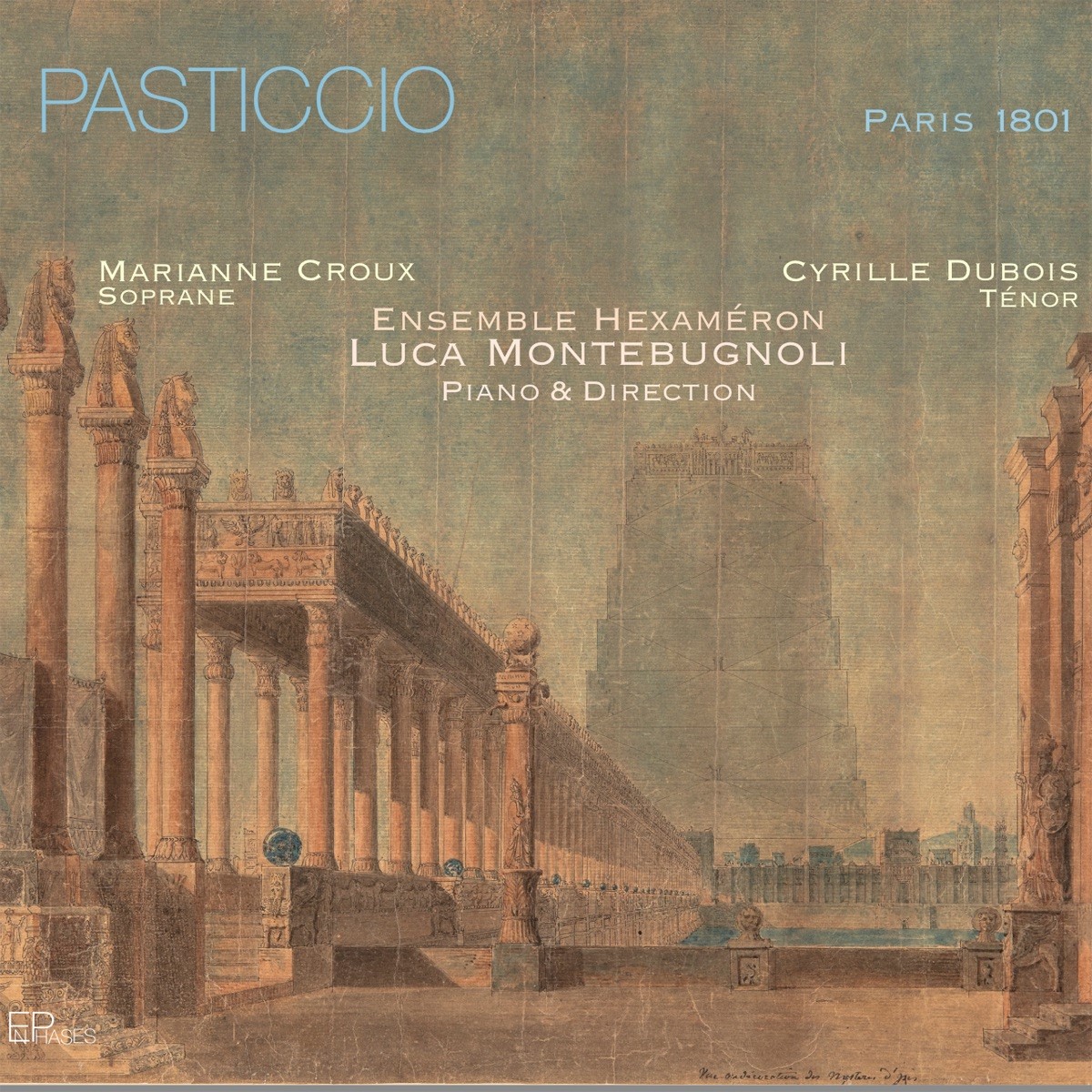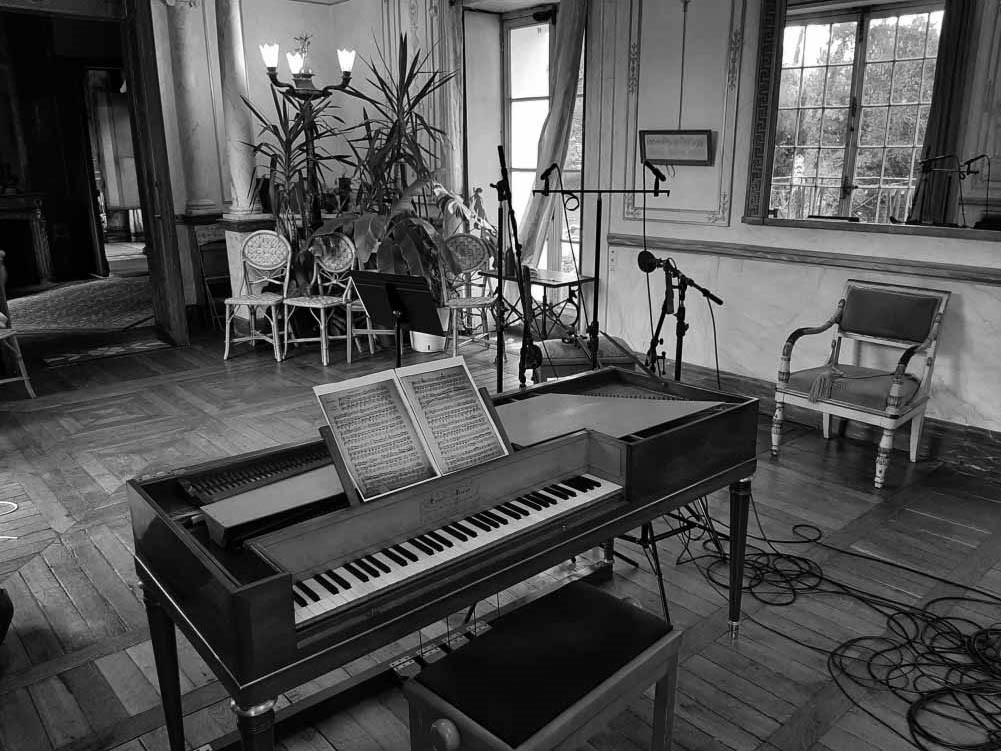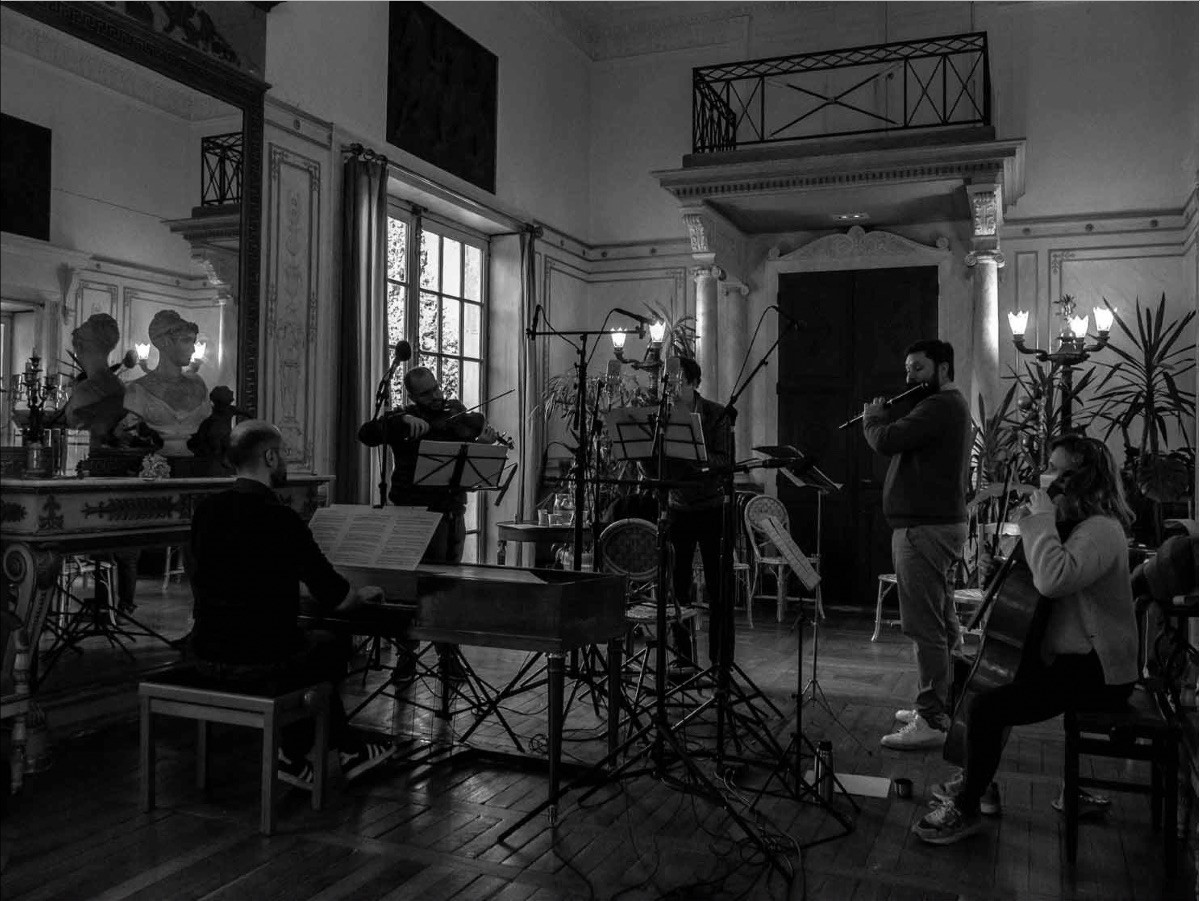PASTICCIO Paris 1801

PASTICCIO Paris 1801
Hexameron Ensemble - Luca Montebugnoli
1CD - Label ENPHASES (ENP017)
Released on 26/04/2024 Distribution OUTHERE
Marianne Croux, soprano
Cyrille Dubois, tenor
Hexaméron Ensemble
Luca Montebugnoli, piano and conductor
Roldán Bernabé, violin
Nicolas Bouils, flute
Amaryllis Jarczyk, cello
Wolfgang Amadeus Mozart (1756-1791) /
Ludwig Wenzel Lachnith (1746/1820)
LES MYSTÈRES D’ISIS (1801) [DIE ZAUBERFLÖTE (1791)] Livret d’Étienne Morel de Chédeville
1. Ouverture
arrangement pour piano, flûte, violon et violoncelle par L. W. Lachnith
Domenico Cimarosa (1846-1801) IL MATRIMONIO SEGRETO (1792) Livret de Giovanni Bertati
2. Acte II, scène 5 : Pria che spunti in ciel l’aurora
François Devienne (1759-1803)
Grand solo pour la flûte avec accompagnement de violon et basse ad libitum [7e concerto pour la flûte, en mi mineur (1787)]
Version arrangée par Pierre Vaillant (1814) et adaptée pour flûte et piano
3. Allegretto poco moderato
Wolfgang Amadeus Mozart / Ludwig Wenzel Lachnith LES MYSTÈRES D’ISIS
4. Acte I, scène 8 : Cher Isménor, prens ma défense
[Don Giovanni, Or sai chi l’onore]
François Devienne
ROMANCES DE GONZALVE DE CORDOUE, ROMAN DU CITOYEN FLORIAN (1795) Poèmes de Jean-Pierre Claris de Florian
Accompagnement de piano, flûte et violoncelle
5. Chant de Pedro
6. Chant de Cortez
7. Hymne de la mort
Jean-Louis Duport (1749-1819)
8. Romance pour violoncelle et piano (ca. 1810)
Giovanni Paisiello (1740-1816)
NINA, O SIA LA PAZZA PER AMORE, R. 1.78 (1789)
Livret de Giuseppe Carpani d’après Benoît-Joseph Marsolier des Vivetières
9. Acte I, scène 6 : Il mio ben quando verrà
Felice Blangini (1781-1841)
SIX NOCTURNES À DEUX VOIX, OP. 8 (CA. 1811) Poèmes de Pietro Metastasio
10. Ti sento, sospiri
11. Placido zeffiretto
12. Dal mio bel sol lontano
Wolfgang Amadeus Mozart / Ludwig Wenzel Lachnith LES MYSTÈRES D’ISIS
13. Acte I, scène 4 : O gage si cher à mon cœur
Die Zauberflöte, Dies Bildnis ist bezaubernd schön]
Ferdinand Hérold (1791-1833) TROISIÈME CONCERTO POUR PIANO (1813)
14. II. Andante con violino obbigato
Pierre Garat (1762-1823)
15. La complainte du troubadour (1793)
SIX NOUVELLES ROMANCES (CA. 1795 Accompagnement de piano, violon et violoncelle
16. IV. Salut à toi belle prairie
W. A. Mozart
CONCERTO POUR PIANO EN DO MAJEUR N. 25 KV 503 (1786) Version arrangée par F. Kalkbrenner (1828) et adaptée pour piano à 5 octaves et demie par Luca Montebugnoli
17. III. Allegretto
Felice Blangini
SIX NOCTURNES À DEUX VOIX, OP. 8
18. Questo core se teme e spera
19. Non so dire se sono amante
20. Che fa il mio bene
A mysterious opera, a historic piano, two singers and four instrumentalists. By offering an anthology of vocal and instrumental pieces, the Hexaméron Ensemble paints a musical portrait of Paris in the early 19th century, at the crossroads of different styles and influences, when Mozart was still an unknown composer in France.
Recorded at the Château de la Petite Malmaison, Reuil , from 13 to 15 March and from 4 to 6 October 2023
Sound recording / Artistic direction / Editing: Franck Jaffrès / Unik Access
Luca Montebugnoli plays an Erard Pianoforte carré, Paris 1806, owned by La Nouvelle Athènes - Centre des pianos romantiques
Tuners: Guillaume Durambur, Benjamin Gréber
BETWEEN OPERA AND SALON: A PORTRAIT OF MUSICAL PARIS IN THE EARLY NINETEENTH CENTURY
(Extract from the libretto - Luca Montebugnoli)
When, more than three years ago, we began work on the musical project that gave birth to this disc, we started with two historical objects: an opera, Les Mystères d'Isis, premiered at the Paris Opéra in the summer of 1801, and a French square piano by Érard Frères dated 1806, which had just been restored. These two ‘artefacts’ both served as keys to the discovery of French musical culture of the period between the end of the revolutionary period and the First Empire, whose musical output is still largely unknown. The programme for this album has thus taken shape as we delve deeper into the discovery of this opera and its historical and aesthetic context, and as we explore the sound and expressive qualities of the piano and the associated repertoire. (...)
In a living room, around a piano
(...) To ensure that this work of imagination and recreation took place in the best possible conditions, we chose to record this disc in a historic salon: the splendid salon of the Château de la Petite Malmaison, built between 1803 and 1805 at the wish of Empress Joséphine de Beauharnais, Napoleon's first wife, just a stone's throw from her private residence, the Château de Malmaison. (...)
At the centre of this space, we have placed the square Érard Frères pianoforte from 1806. At the turn of the century, the square piano was the model par excellence of French piano making and an essential presence in any musical salon, more so than the grand piano, known as the ‘harpsichord-shaped’ piano, which was still rare in Paris. With its mechanical and acoustic characteristics, including the registers operated by its four pedals (lute, damper lift, celestial voice and bassoon), it is an indispensable tool for reconstructing the sound universe of the period, delicate indeed, but rich in colour and nuance. Surrounding the piano are the musicians of the instrumental ensemble: a flautist, a violinist and a cellist, playing on historical instruments, and, of course, two singers, a soprano and a tenor, since singing represents the soul of the musical salon. (...)
The work of arrangers
Putting together this complex programme was made possible by a great deal of arranging. If the salon serves as a crossroads for different cultures and genres, it owes this to the fact that any repertoire is constantly being adapted, or even rewritten, to make it playable under the given conditions: number of musicians, instruments available, layout of the space, etc. The art of arranging is therefore a skill that every musician must master if he or she wants to make a career in the salon. The art of arranging is a skill that every musician must master if he or she wants to make a career in the music world. Today, it consists of a long-forgotten practice that needs to be reappropriated if we are to reconstruct the experience of the music of the time. (...)
Starting with the story of a mysterious Mozart, an unknown musician whose prolific output was not discovered in France until ten years after his death, and interpreted according to the musical taste of the time, this CD has ended up focusing on another mystery, that of French musical culture in the early nineteenth century. Long excluded from the Western musical canon, hidden by the omnipresence of German and Viennese music, this culture reveals itself to be rich and complex, at the crossroads of different styles and influences. By attempting to give a broad, if necessarily selective, picture of it, we hope to contribute to its rediscovery and reappropriation.


HEXAMERON ENSEMBLE
The Ensemble Hexaméron is a variable-geometry ensemble playing early instruments, led by a group of musicians whose taste for research and experimentation has brought them together around a common project: to revive the practice of chamber music with piano in all its diversity, and the plural nature of its repertoire from the late eighteenth to the nineteenth century. At the heart of the ensemble's project is the evocation of the spirit of the salon, as a space that accommodates music in all its forms: to bring together the well-known masterpieces of chamber music with the forgotten repertoire for accompanied piano, as well as the transcriptions and arrangements for small ensembles that allowed us to savour the pleasure of rehearing the vast output of symphonies, concertos and operas intended for public concerts or the theatre. The Hexaméron ensemble takes its name from a famous composition inspired by the resounding success of Bellini's Puritans in 1837 and composed by six piano virtuosos (Liszt, Chopin, Thalberg, Pixis, Herz and Czerny) for the famous Paris salon of the Princess of Belgiojoso. Like this work, born of the emulation of avant-garde artists, the concerts of the Hexaméron Ensemble are intended as a laboratory for contemporary interpretations inspired and enlivened by the past, to revive the original creative spirit of chamber music today.
The members of Ensemble Hexaméron, led by Italian pianist Luca Montebugnoli, hail from Spain, France and Canada. They trained at the leading early music academies, including the Conservatoire de Paris, the Schola Cantorum in Basel and the Abbaye aux Dames in Saintes, and each pursues a career as a teacher (CRR de Paris) in addition to playing with the great French ensembles: Le Concert Spirituel, Ensemble Diderot, Ensemble Pygmalion, Les Siècles, Les Talents Lyriques, among others.
Share on your networks!
Follow us on the networks!

